Speaker
Description
The orientational correlation scheme introduced earlier for tetrahedral molecules [R. Rey, J. Chem. Phys., 126 (2007) 164506] is extended [L. Temleitner, J. Mol. Liq., 341 (2021) 116916.] for being able to classify orientational correlations between pairs of high symmetry molecules. While in the original algorithm a given orientation of a pair of tetrahedral molecules is characterized unambiguously by the number of ligand atoms that can be found between two planes that contain each centre and are perpendicular to the centre-centre connecting line, in the generalized algorithm, the planes are replaced by cones, whose apex angles are set according to the symmetry of each molecule. The applicability of the method is demonstrated in the room temperature crystalline structure of the C60 molecules (representing the icosahedral symmetry) and the octahedral-shaped SF6 molecule in a wide range of phases (gaseous, supercritical fluid, liquid and plastic crystalline) using classical molecular dynamics. Among the available forcefields, the most suitable chosen by reproducing earlier measured diffraction patterns and experimental densities.

